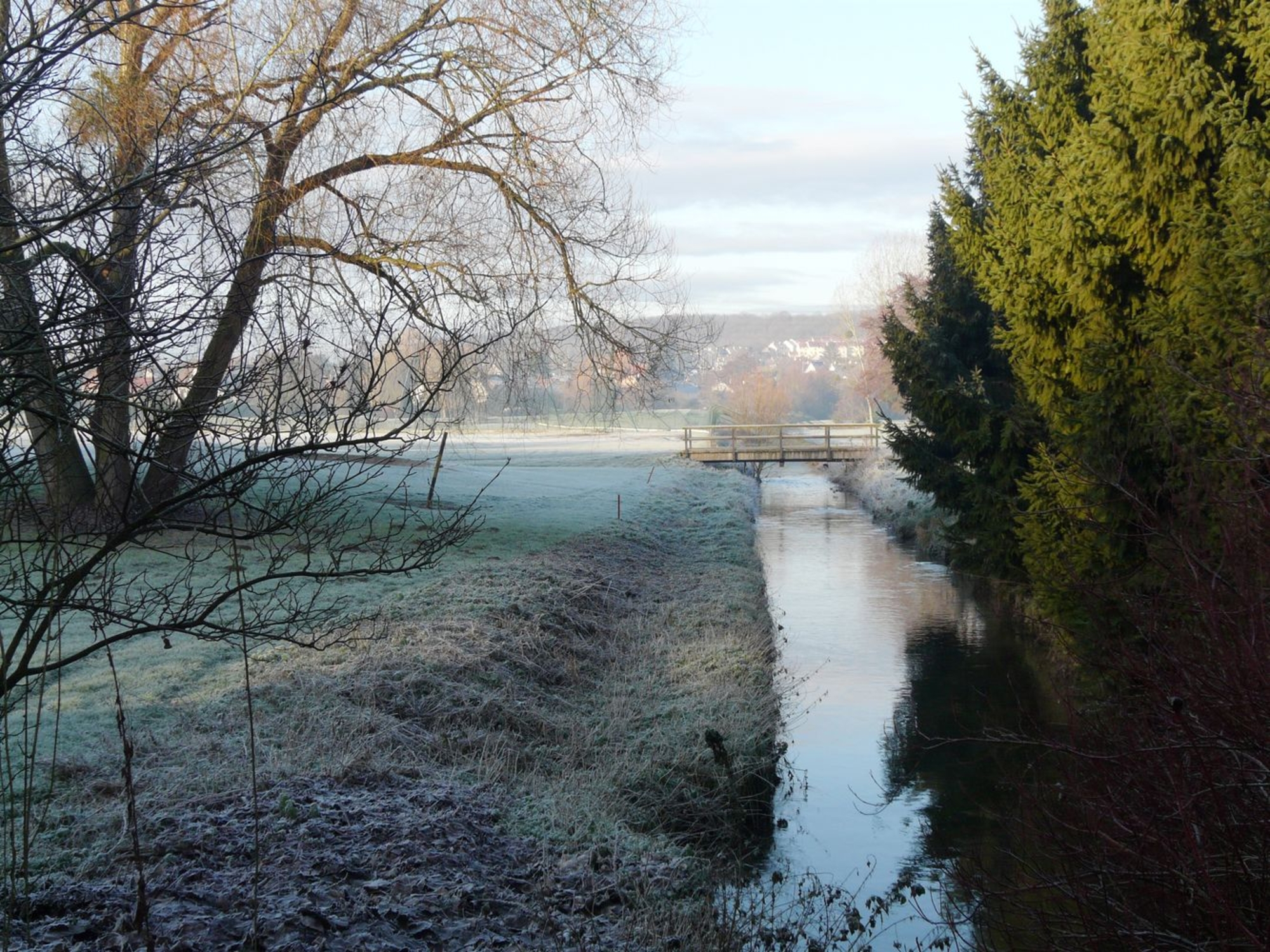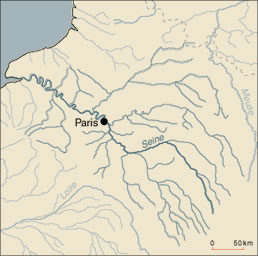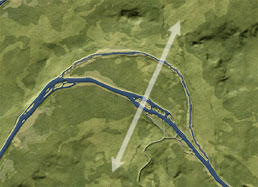- Home
- The city
- The city’s natural settings
- The advantages of Paris
Geographic location of Paris and the Parisian basin.
A river
The primary characteristic of Paris is its location on one of the greatest natural communication routes in Western Europe. Paris is also part of a complete multi-level network of waterways, most of them navigable, at the confluence of major rivers such as the Marne, the Bièvre and the Oise. Upstream, the course of the river receives most of its tributaries, which reinforces the importance of the site as the last big river «crossroad» before Rouen, the Seine's first maritime port.
A road
Paris is also the ideal transfer point between river and road, and therefore of trade between North and South. The islets that made up the present-day Île de la Cité formed a natural ford opening to the North and the Plaine de France via the La Chapelle valley.
3D graphics.
© A.-B. Pimpaud.
A fertile plain
Finally, the large alluvial plain that spread out on both sides of the river was good land for farming. The fluctuations of the Seine made this environment unstable but very rich because it was favourable to many aspects of human habitation and trading. The early history of Paris is one of successive implantations on the banks of the Seine-the search for an active section of the river seemed to be one of the primary considerations in choosing a place to live.


